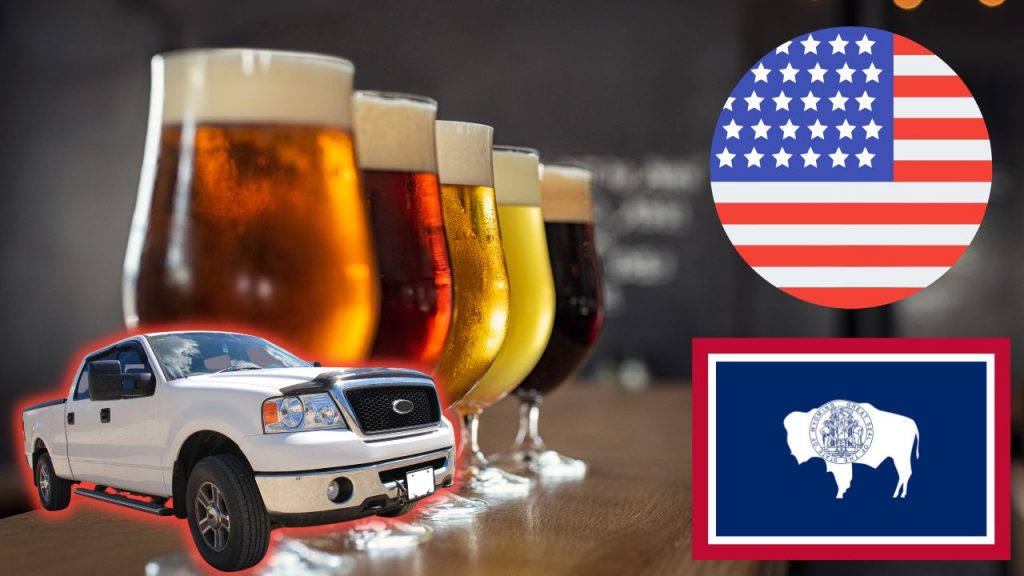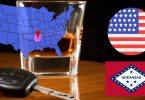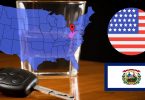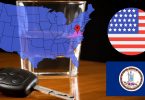In Wyoming, a blood alcohol content (BAC) level of 0.08% or higher legally defines an individual as being intoxicated.
This article aims to increase public awareness about drunk driving in Wyoming. This site does not endorse or promote impaired driving in any state or region.
What is the legal alcohol limit for driving in Wyoming?
In Wyoming, the legal alcohol limit for driving varies depending on the driver’s category. The state enforces specific blood alcohol content (BAC) levels to promote safe driving and reduce the risks associated with impaired driving. Below is a breakdown of the legal BAC limits for different categories of drivers:
- Regular Drivers: The legal BAC limit is 0.08%. Drivers who exceed this limit are considered legally intoxicated and may face DUI charges.
- Commercial Drivers: Individuals holding a commercial driver’s license are subject to a lower BAC limit of 0.04%, reflecting the higher standards of safety required for commercial driving.
- Minors (Under 21): It is illegal for minors to drive with any detectable amount of alcohol in their system. This zero-tolerance policy aims to discourage underage drinking and driving.
Drink and Drive Penalties and Punishments in Wyoming
In Wyoming, driving under the influence (DUI) carries significant legal consequences designed to deter individuals from engaging in this dangerous behavior. The state has established strict penalties that escalate with subsequent offenses, reflecting the seriousness with which Wyoming views the offense of DUI. It is crucial for drivers in Wyoming to understand these penalties and the legal processes involved in DUI cases. Additionally, laws and penalties can evolve, so it’s advisable to frequently check the official state website for the most current information.
Criminal Penalties
- First Offense: A DUI conviction can result in up to 6 months in jail, a fine of up to $750, or both.
- Second Offense (within 10 years): Similar penalties to a first offense, but includes a mandatory minimum of 7 days in jail and a $200 fine.
- Third Offense (within 10 years): Maintains the same maximum penalties but requires a minimum of 30 days in jail and a fine between $750 and $3,000. Completion of an approved inpatient treatment program may suspend up to 15 days of jail time.
- Fourth or Subsequent Offense (within 10 years): Punishable by up to 7 years in prison, a $10,000 fine, or both.
- DUI with a Child Passenger: The presence of a child passenger under 18 during the offense increases the penalty for a first offense to a maximum of 1 year in jail. A previous conviction under these circumstances can lead to a maximum of 5 years in prison.
- Causing Serious Bodily Injury: If the DUI violation results in serious bodily injury, the penalty for a first offense can reach up to 10 years in prison and a fine between $2,000 and $5,000. A subsequent offense increases the maximum imprisonment to 20 years.
Implied Consent
Wyoming law requires drivers to submit to chemical tests (blood, breath, or urine) to determine BAC levels under implied consent provisions. Refusal to comply can lead to additional penalties, especially for commercial drivers, including a minimum one-year disqualification for refusing the test.
Driver’s Licenses and Insurance
Convictions affect driving privileges significantly, with suspensions ranging from 90 days for a first offense to a three-year revocation for third and subsequent offenses. Commercial drivers face stricter BAC limits and penalties for violations.
Ignition Interlock Device
Convicted individuals may be required to install an ignition interlock device in their vehicles. The mandate varies from six months for a first offense to potentially lifelong installation for multiple offenses, with periodic reviews for possible removal.
Other Provisions
Wyoming offers alternative sentencing options, such as allowing DUI convicts to continue employment or education while serving jail time. Additionally, the state employs a zero-tolerance policy for underage drinking and driving, with its own set of penalties and implied consent laws tailored to younger drivers.
This overview underscores the complexity and severity of DUI penalties in Wyoming. Individuals facing DUI charges should seek legal advice, and all drivers should stay informed about current laws to avoid the severe consequences of driving under the influence.
How Can I Calculate if My Alcohol Blood Limit Is Legal in Wyoming?
In Wyoming, as in other states, law enforcement officers use several methods to determine if an individual is driving under the influence (DUI) of alcohol. The most common method is the administration of chemical tests, including breath, blood, or urine tests, to measure the blood alcohol content (BAC) level. These tests are conducted under the state’s implied consent law, which means that by driving on Wyoming roads, drivers agree to submit to these tests if suspected of DUI.
As an experienced phlebotomist with a decade of expertise, I recommend two reliable methods for estimating your BAC level to ensure it remains within legal limits:
- Use a High-Quality Alcohol Breathalyzer: For those seeking a convenient way to monitor their BAC, I highly recommend the BACtrack S80 alcohol breathalyzer. This device is notable for its professional-grade accuracy, making it a trusted choice among consumers. It is DOT & NHTSA approved and has received FDA 510(k) clearance, ensuring its reliability and credibility. Keeping a BACtrack S80 in your vehicle can be a wise decision, especially in Wyoming, where individuals may underestimate their level of impairment. This tool can provide a quick and efficient estimate of your BAC, helping you make informed decisions about your ability to drive safely.
- Utilize My BAC Calculator: Understanding the importance of accurate BAC estimation, I collaborated with fellow phlebotomists and skilled web developers to create an accessible online BAC calculator. This tool is designed to offer an estimate of your BAC level based on the input of various factors, such as the amount of alcohol consumed, the time frame of consumption, weight, and gender. Our goal in creating this calculator was to provide an educational resource that can help individuals gauge their level of impairment.
It’s important to note that while both the BACtrack S80 breathalyzer and our online BAC calculator offer valuable insights, they do not guarantee 100% accuracy in their results. Factors such as individual metabolism, the type of alcohol consumed, and recent food intake can influence BAC levels. Therefore, these tools should be used as guides to help you make safer choices rather than definitive measures of your legal ability to drive.
By employing these methods, you can gain a better understanding of your BAC level and make more responsible decisions regarding driving after consuming alcohol. Remember, the safest option is always not to drive if you’ve been drinking, ensuring you stay within the legal and safe limits for operating a vehicle.
Ways to Avoid Driving with a High BAC in Wyoming

Driving under the influence of alcohol not only puts you and others at risk but can also lead to serious legal consequences in Wyoming. Fortunately, there are several responsible alternatives to driving if you’ve been drinking. Here are some practical suggestions to ensure you stay safe and avoid driving with a high Blood Alcohol Content (BAC):
- Utilize Rideshare Apps and Local Taxi Services: One of the most convenient ways to avoid driving after drinking is to use rideshare applications like Uber or Lyft. These apps provide a quick and easy way to get a ride with just a few taps on your smartphone. Additionally, supporting local taxi companies is another excellent option. For example, if you’re in Cheyenne, consider using Unique Unlimited LLC, or if you’re in Casper, Elite Taxi Service offers reliable transportation. Both services provide a safe way to get home without risking driving under the influence.
- Order a Designated Driver Service: If you’ve driven to a location and find yourself unable to safely drive back due to alcohol consumption, ordering a designated driver service can be a lifesaver. These services offer a professional driver who can drive you and your vehicle back home safely. In Cheyenne, GR-Gold Line: Cheyenne-Holiday Inn provides such services, and in Casper, you can rely on Casper BuDDies Designated Driver Service. To find a designated driver service in your area, a simple Google search for “designated driver service” followed by the name of your city should provide you with options.
These methods not only help in avoiding driving with a high BAC but also contribute to the overall safety of Wyoming’s roads by reducing the number of impaired drivers. By planning ahead and choosing a safe transportation alternative, you can enjoy your outings without compromising on safety or legality. Remember, the goal is to make responsible choices that protect you, your loved ones, and your community.
Sticking to DUI Laws in Wyoming: Sad Statistics
Driving under the influence is a significant safety issue in Wyoming, as evidenced by NHTSA data showing that 34% of the state’s fatal collisions in 2020 involved drivers with a BAC of 0.08% or higher. To combat this, Wyoming enforces strict DUI laws to reduce drunk driving incidents.
It’s essential to avoid driving after consuming alcohol, as even a small amount can impair your ability to control your vehicle and yourself, posing a risk to everyone on the road. Alternative transportation options such as Uber, designated driver services, or taxis offer safe ways to get home without endangering lives.
To ensure you’re within legal limits, consider using a certified alcohol breathalyzer before deciding to drive. Staying informed about Wyoming’s DUI laws by regularly checking the state’s official website can also help you make safer choices and contribute to reducing drunk driving incidents.







